Introduction
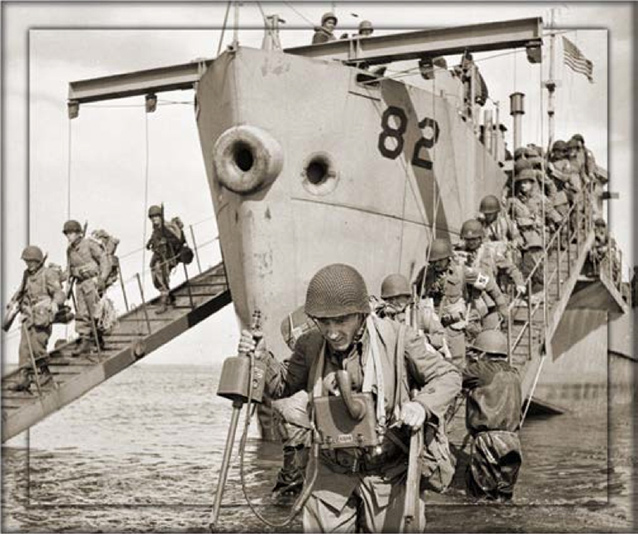
Library and Archives Canada, accession number 1967-052 NPC, item Z-1995-31
This resource guide is designed to aid students and teachers in researching Alaska’s World War II history. Alaska’s role as battlefield, lend-lease transfer station, and North Pacific stronghold was often overlooked by historians in the post-war decades, but in recent years awareness has been growing of Alaska’s wartime past. This renewed interest generates exciting educational opportunities for students and teachers researching this chapter in the history of our state. Few people know that the only World War II battle fought on U.S. soil took place in Alaska or that Japanese forces occupied two Aleutian Islands for more than a year. Still fewer know of the Russian pilots who trained in Fairbanks, the workers who risked their lives building the Alaska Highway, or the Alaska Scouts who patrolled the Bering Sea coast. The lives of Alaskans were forever changed by the experience of war, and the history of that dramatic era is still being written.
A map of important World War II sites, followed by a summary of Alaska’s World War II experience is included. Information about National Historic Landmarks and Monuments related to World War II in Alaska is also included. The selected bibliography that follows is divided into twelve parts to aid student researchers in selecting topics:
- War Comes to Alaska
- Aleutian Campaign
- Alaska Highway and Canol Pipeline
- Wartime Construction
- Native Defenders
- Warplanes and Seacraft
- Aleut Evacuation
- Canadian Participation
- Japanese-American Internment
- Lend-Lease Program
- Japanese Naval Power
- Branches and Units
This bibliography includes books, journals, and videotapes that can be found in Alaska’s libraries or obtained through interlibrary loan. The articles cited were selected for their relevance to a specific theme and can be found (with some exceptions) in Alaskan periodicals. The bibliography is not meant to be comprehensive, but is instead intended as a gateway to further research.
Information regarding Alaska’s libraries and museums follows, with descriptions of collections relevant to Alaska’s World War II history and a list of on-line resources. The individual museums and libraries are organized by city. The resource guide concludes with an introduction to the National History Day program and History Day in Alaska.
Alaska World War II Military Sites
Explore World War II's northern Pacific campaign through sites across Alaska
Summary of World War II in Alaska
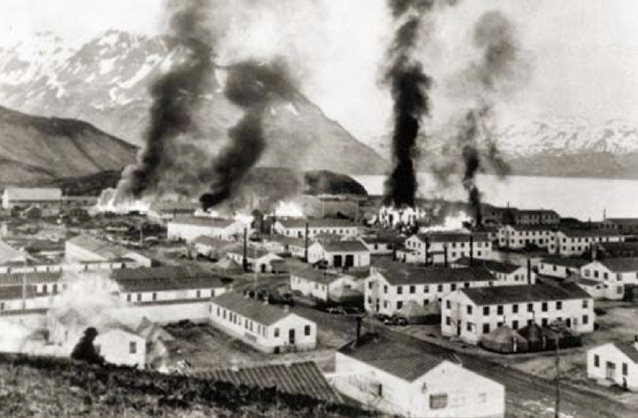
Archives and Manuscripts Department, University of Alaska Anchorage
Japanese Aggression in China
In 1931, Japan launched attacks in eastern China in an effort to seize control of China’s eastern province, Manchuria. U.S. suspicion and mistrust of Japan intensified when Japanese military forces attacked a U.S. oil tanker convoy and the USS Panay, a U.S. Naval gunboat escorting the convoy, on the Yangtze River in 1937. Three people were killed in the attack and 11 seriously injured when Japanese planes fired on life boats and survivors on shore.
U.S. Northern Defense
With increasing hostilities in China the U.S. Government became concerned about the possibility of attack from across the Pacific. In 1935, Brigadier General William Mitchell urged Congress to adopt a strong northern air defense, declaring, “I believe in the future he who holds Alaska will hold the world.” In 1939 Congress established a Panama-Hawaii-Alaska defense triangle to protect America’s vulnerable western coast. Alaska, the largest and least fortified of the three, soon saw the construction of naval bases at Sitka, Dutch Harbor, and Kodiak.
War Comes to Alaska
Six months after the attack on Pearl Harbor, the Japanese bombed the U.S. Dutch Harbor Naval Operating Base and U.S. Army Fort Mears, near Unalaska Island and occupied the Aleutian islands of Attu and Kiska. For many decades following the War, the prevailing understanding about the Japanese Aleutian operation was that it served as a mere diversionary measure from their Midway operation. Recent research, however, concludes that the Japanese had a broader and longer term strategy to establish and expand an eastern defensive perimeter. In response, U.S. military strategists knew that they could not risk leaving the Aleutians open as stepping stones for Japanese attacks on the United States mainland. In addition, the occupation was a significant propaganda victory for the Japanese—the affront could not go unanswered.
Aleutian Campaign
Because planes departing from Kodiak and Dutch Harbor did not have the nearly 1,400 mile range to engage the Japanese at Attu and Kiska, U.S. forces built bases on other Aleutian islands as refueling and maintenance stops, allowing them to strike further west. Pilots and ground troops soon realized they were facing a second enemy, Mother Nature. Weather along the Aleutian chain is some of the worst in the world, with dense fogs, violent seas, and fierce wind storms called williwaws. Aircraft lacking accurate navigational devices or consistent radio contact crashed into mountains, each other, the sea—simply finding the enemy was a life-and-death struggle. For soldiers in the Aleutians, contact with the enemy was infrequent and fleeting, but the weather was a perpetual adversary.
Native Defenders
When the Alaska National Guard was called to active duty in September 1941, Governor Gruening received permission to reorganize and establish the Alaska Territorial Guard. Many Alaska Natives joined units of the Alaska Territorial Guard to patrol Alaska’s coasts and lead reconnaissance missions in combat zones.
Aleut Evacuation
Forty-two Aleuts living on the island of Attu and two Navy weather observers on Kiska were taken prisoner by the Japanese and sent to Japan where 17 died. In June and July 1942, the U.S. military evacuated 881 Aleuts from nine villages located on several islands including the Pribilofs and Unalaska. They were taken by a military transport ship in cramped conditions to abandoned canneries and mining camps in Southeast Alaska. Nearly a hundred died in the horrible conditions of these camps. During their absence, the U.S. military burned many of their homes to keep the Japanese from using them, and removed religious icons from their churches.
Japanese Internment
Under an emergency measure in effect in the western United States, Alaskans of Japanese descent were shipped to internment camps in the Lower 48. The fear of sudden attack also led to censorship of the media, food rationing, and obligatory blackouts in coastal areas.
Lend-Lease Program
The Lend-Lease Act was passed in 1941 as a means of providing military aide to allies. As part of the Lend-Lease program over 8,000 U.S. aircraft were transferred to Russia via the Alaska-Siberia (ALSIB) route beginning in 1942. The ALSIB route consisted of a string of new airfields constructed in Alaska and Canada that allowed American pilots to leapfrog through the Canadian and Alaskan wilderness to Ladd Field in Fairbanks. At Ladd Field Russian pilots were waiting to fly the planes across the Bering Sea and Siberia to Russia’s Western Front with Germany.
Wartime Construction
Wartime construction brought major changes in transportation and communication with the outside world and within Alaska. Until 1942 passengers and freight arrived in Alaska two ways—by boat or plane. One of the biggest feats of the war time construction program was the construction of the Alaska Canada Military Highway, a 1,420-mile wilderness highway which was completed in less than nine months. Other construction included telephone lines, oil pipelines, railways, and roughly 300 military installations throughout Alaska.
Population Boom
As a result of the War thousands of men and women moved to the sparsely populated territory, and many stayed. In 1940, just over 72,000 people called Alaska home. By 1950, the population nearly doubled to 129,000. Anchorage saw its population balloon from 3,000 to 47,000, while Fairbanks grew from 4,000 to nearly 20,000. While many military bases closed after the War some stayed open and even grew. The military population, which was about 500 in 1940 increased to about 22,000 in 1950.
Alaska’s War Ends
On May 11, 1943 U.S. forces landed on Attu and began an uphill battle to retake the island. After nineteen days of fighting, the beleaguered Japanese soldiers launched a final banzai charge in an attempt to break through the American line. When the battle ended, only 29 prisoners remained of a Japanese force of roughly 2,600. Three months later the drama at Attu was matched by an equally dramatic anticlimax. Foul weather had delayed Allied attempts to retake Kiska, and when U.S. and Canadian forces finally landed on August 15, they were stunned to find that the Japanese were gone—having evacuated under cover of fog three weeks before. As the guns fell silent in the Aleutians, many Army and Navy facilities were closed, though fighting in the Pacific and in Europe continued for another two years.
National Landmarks
The Secretary of the Interior, through the National Park Service, took steps to recognize the importance of Alaska’s role in World War II history by designating eight sites as National Historic Landmarks. These sites include former Army and Navy bases, Aleutian battlefields, airfields, and an area on Kiska Island once occupied by the Japanese. National Historic Landmark status recognizes these places as being among the nation’s most treasured resources deemed worthy of preservation.
Alaska’s World War II National Historic Landmarks
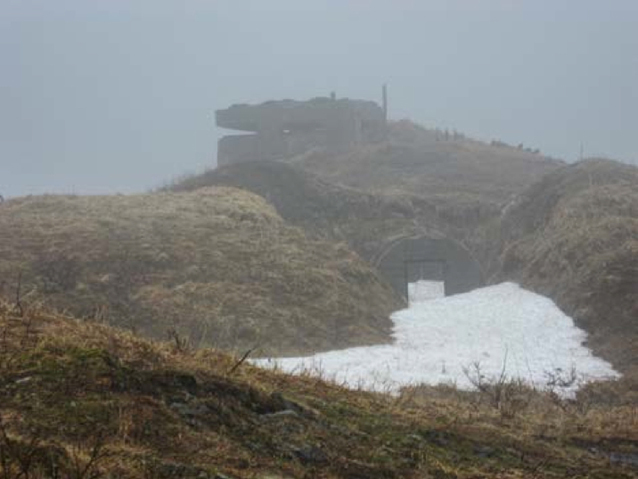
National Park Service, Alaska Regional Office
The Secretary of the Interior, through the National Park Service, designated the following NHL sites to commemorate the significant events and human drama of Alaska’s role in World War II:
- Adak Army Base and Naval Operating Base, Adak Island
- Attu Battlefield and Bases, Attu Island
- Fort Glenn (Cape Field), Umnak Island
- Dutch Harbor Naval Operating Base and Fort Mears U.S. Army, near Unalaska Island
- Japanese Occupation Site, Kiska Island
- Kodiak Naval Operating Base and Forts Greely and Abercrombie, Kodiak Island
- Ladd Field (Fort Wainwright), Fairbanks
- Sitka Naval Operating Base and U.S. Army Coastal Defenses, Sitka
Part of the National Park Service’s role is to administer the NHL program. Available materials include a booklet entitled “WWII National Historic Landmarks: The Aleutian Campaign” and two lesson plans from the Teaching with Historic Places series entitled “Attu: North American Battleground of World War II” and “Ladd Field and the Lend-Lease Mission: Defending Alaska in WWII.” The NHL program implemented an American Battlefield Protection Program grant which culminated in “The Cultural Landscape of the World War II Battlefield of Kiska, Aleutian Islands” 2012 report. For copies of these materials please visit the National Park Service, Alaska Regional Office’s National Historic Landmarks web page at: https://www.nps.gov/akso/history/nhl-main.cfm.
Aleutian World War II National Historic Area
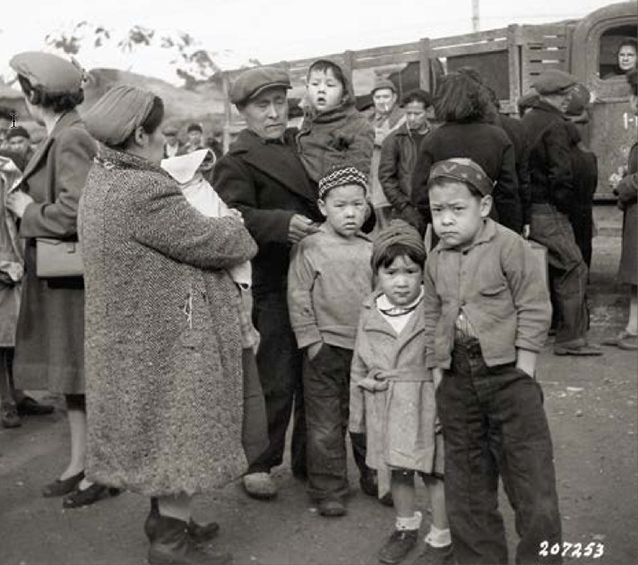
Aleutian Pribilof Islands Association Inc.
Though visiting a real historic place is one of the best ways to gain valuable insights, several of Alaska’s WWII sites are difficult to access. One resource for learning more about events in the Aleutians during this period is through the Aleutian WWII National Historic Area (NHA). Designated by Congress in 1996, the NHA is owned by the Ounalashka Corporation with historic preservation technical assistance provided by the National Park Service-Alaska Regional Office. The NHA includes the historic footprint of Fort Schwatka, along with a Visitors Center located in the former WWII Aerology Building, at the Unalaska Airport on Amaknak Island. The purpose of the NHA includes educating the public about the history of the Aleut people, and the role of the Aleut people and the Aleutian Islands in the defense of the U.S. in World War II. More information can be found at the following NPS website: http://www.nps. gov/aleu/index.htm
World War II Valor in the Pacific National Monument
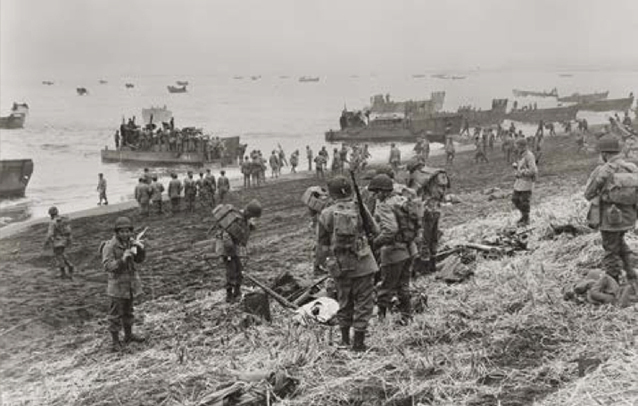
Library of Congress Prints and Photographs Division, Washington, D.C.
In December 2008, President George H. Bush established, by Executive Order, the World War II Valor in the Pacific National Monument. The new monument was established to commemorate this “pivitol period in our Nation’s history” and elevated nine historic sites in Hawaii, California, and Alaska to monument status. The Alaska unit includes historic areas on Attu and Kiska, and the Atka Island crash site of a Consolidated B-24D Liberator bomber. All of the Alaska sites are on lands managed by the U.S. Fish and Wildlife Service.
World War II Valor in the Pacific National Monument interprets the stories of the Pacific War including events at Pearl Harbor, the internment of Japanese Americans, and the Aleutian Campaign. The National Park Service and U.S. Fish and Wildlife Service jointly developed a Foundation Statement for the Alaska Unit of the Monument. The document provides a vision for future decision making and the development of management and implementation plans that will define the Alaska Unit’s operations, resource protection, and visitor experience. Similar foundation documents are being produced for the Hawaii and California units. Combined, these documents will set the stage for future planning and development of the World War II Valor in the Pacific National Monument. The document can be viewed and downloaded by visiting alaskamaritime.fws.gov/pdf/valor.pdf.
Selected Bibliography
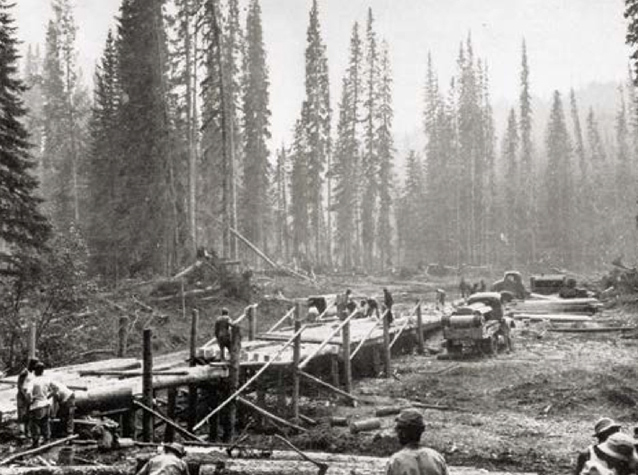
Anchorage Museum of History and Art
War Comes to Alaska
Alaska at War. Aurora Films. [videorecording]. 60 min. Produced by Laurence Goldin. Written by Bradford Matsen and Laurence Goldin. Anchorage: Alaska Video Publishing for Alaska Historical Commission, 1987, 1993, 2005.
Alaska Geographic. Fairbanks, vol. 22, no. 1. Anchorage: Alaska Geographic Society, 1991.
Alaska Geographic. World War II in Alaska, vol. 22, no. 4. Anchorage: Alaska Geographic Society, 1995.
Antonson, Joan M. and William S. Hanable. Alaska’s Heritage. Alaska Historical Commission Studies in History, no. 133. Anchorage: Alaska Historical Society, 1985.
Chandonnet, Fern, ed. Alaska at War, 1941-1945: The Forgotten War Remembered. Papers from the Alaska at War Symposium, Anchorage, Alaska, November 11-13, 1993. Anchorage: Alaska at War Committee, 1995.
Cohen, Stan. The Forgotten War: A Pictorial History of World War II in Alaska and Northwestern Canada. [4 vol.]. Altona, Manitoba: D.W. Friesen and Sons, 1981.
Drawing the Lines of Battle: Military Art of World War II Alaska. Anchorage: Anchorage Museum of History and Art, 1989.
Garfield, Brian. The Thousand-Mile War: World War II in Alaska and the Aleutians. Fairbanks: University of Alaska Press, 1995.
“German Prisoners of War in Alaska: The POW Camp at Excursion Inlet.” Alaska Journal 14 (1984): 16-20.
Hays, Otis E., Jr. “The Silent Years in Alaska: The Military Blackout during World War II.” Alaska Journal 16 (1986): 140-147.
Lawler, Pat. “Buckner and his Boys Invade Alaska – Taking the Territory by Storm.” Alaska Journal 2 (1981): 84-99.
Morison, Samuel Eliot. History of United States Naval Operations in World War II, vol. 7, Aleutians, Gilberts and Marshalls, June 1942-April 1944. Boston: Little, Brown and Co., 1951.
Naske, Claus-M. and Herman Slotnik. Alaska: A History of the 49th State. Norman: University of Oklahoma Press, 1987.
Aleutian Campaign
Alaska Geographic. The Aleutians, vol. 7, no. 3. Anchorage: Alaska Geographic Society, 1980.
Alaska Geographic. Kodiak, vol. 19, no. 3. Anchorage: Alaska Geographic Society, 1992.
Alaska Geographic. Kodiak, Island of Change, vol. 4, no. 3. Anchorage: Alaska Geographic Society, 1977.
Alaska Geographic. Unalaska/Dutch Harbor, vol. 18, no. 4. Anchorage: Alaska Geographic Society, 1991.
Alaska Geographic. World War II in Alaska, vol. 22, no. 4. Anchorage: Alaska Geographic Society, 1995.
Aleutian Invasion: World War Two in the Aleutian Islands. Prepared by the students of Unalaska High School. Unalaska: Unalaska High School, 1981.
The Aleutians Campaign, June 1942-August 1943. Washington: Naval Historical Center, Department of the Navy, 1993.
They Bloody Aleutians. [videorecording]. 50 min. New York: A&E Television Network, 2001.
The Capture of Attu: Tales of World War II in Alaska, as Told by the Men who Fought There. Edmonds, Alberta: Alaska Northwest Publishing, 1984.
Denfeld, Colt D. The Defense of Dutch Harbor, Alaska from Military Construction to Base Cleanup. Anchorage: U.S. Army Corps of Engineers, 1987.
Ellis, Dan. “Springfield Rifles and Forgotten Men.” Alaska Journal 10 (Autumn 1980): 54-59.
Lorell, John A. The Battle of the Komandorski Islands. Annapolis: Naval Institute Press, 1984.
Morgan, Lael. “An Artist’s War in the Aleutians.” Alaska Journal 10 (Summer 1980): 34-39.
Murray, Robert Haynes. The Only Way Home. Waycross: Brantley Printing Company, 1986.
Rearden, Jim. “Kiska: One Island’s Moment in History.” Alaska (September 1986): 18-21, 49-51.
Rearden, Jim. Forgotten Warriors of the Aleutian Campaign. Missoula: Pictorial Histories Publishing Co., 2005.
Red, White, Black & Blue. [videorecording]. 86 min. Directed by Tom Putnam. Produced by Tom Putnam, Jeff Malmberg, Matt Redecki, and Michael Harbour. Arlington: PBS Home Video, 2007.
Report from the Aleutians. [videorecording]. 47 min. Directed by John Huston. Army Pictorial Service. Burbank: Viking Video Classics, 1986.
Report from the Aleutians: Hook Down, Wheels Down. [videorecording]. 117 min. U.S. Army Signal Corps, 2001.
Rourke, Norman E. War Comes to Alaska: The Dutch Harbor Attack, June 3-4, 1942. Shippenburg: Burd Street Press, 1997.
Spennemann, Dirk H.R. The Cultural Landscape of the World War II Battlefield of Kiska, Aleutian Islands. Anchorage: U.S. National Park Service, 2011.
Spennemann, Clemens, and Kozlowski. “Scars on the Tundra: The Cultural Landscape of the Kiska Battlefield, Aleutians”. Alaska Park Science. Anchorage: National Park Service. (June 2011). Online: https://www.nps.gov/akso/nature/science/ ak_park_science/PDF/2011Vol10-1/APS_Vol10- 1_0-48-complete-issue.pdf
Seiple, Samantha. Ghosts in the Fog: The Untold Story of Alaska’s WWII Invasion. New York: Scholastic Reference, 2011.
Webber, Bert. Aleutian Headache: Deadly World War II Battles on American Soil. Medford: Webb Research, 1993.
Alaska Highway and Canol Pipeline
The Alaska Highway, 1942-1992. [videorecording]. 58 min. Written and produced by Tom Morgan for Alaska Public Television, KAKM TV. Anchorage: Alaska Public Television, 1992.
Brebner, Phyllis Lee. The Alaska Highway: A Personal and Historical Account of the Building of the Alaska Highway. Erin, Ontario: Boston Mills Press, 1985.
Coates, Kenneth. The Alaska Highway: Papers of the 40th Anniversary Symposium. Vancouver, B.C.: University of British Columbia Press, 1985.
Coates, Kenneth. The Alaska Highway in World War II: The U.S. Army of Occupation in Canada’s Northwest. Tulsa: University of Oklahoma Press, 1992.
Coates, Kenneth. North to Alaska! Fifty Years on the World’s Most Remarkable Highway. Fairbanks: University of Alaska Press, 1991.
Coates, Kenneth and Judith Powell. “Whitehorse and the Building of the Alaska Highway, 1942-1946.” Alaska History 4 (Spring 1989): 1-26.
Cohen, Stan. ALCAN and CANOL: A Pictorial History of Two Great World War II Construction Projects. Missoula: Pictorial Histories Publishing, 1992.
Duesenberg, H. Milton. Alaska Highway Expeditionary Force: A Roadbuilder’s Story. Clear Lake: H&M Industries, 1994.
Gage, S.R. A Walk on the Canol Road: Exploring the First Major Northern Pipeline. Oakville, Ontario: Mosaic Press, 1990.
Griggs, William E. The World War II Black Regiment that Built the Alaska Military Highway: A Photographic History. Jackson: University Press of Mississippi, 2002.
Hesketh, Bob, ed. Three Northern Wartime Projects: Alaska Highway, Northwest Staging Route, and Canol. Occasional Publication Series, no. 38. Edmonton, Alberta: Published jointly by Canadian Circumpolar Institute and Edmonton & District Historical Society, 1996.
Hollinger, Kristy. The Haines-Fairbanks Pipeline. Fort Colins, CO: CEMML, Colorado State University, 2003.
Karamanski, Theodore J. “The Canol Project: A Poorly Planned Pipeline.” Alaska Journal 9 (Autumn 1979): 17-22.
Krakauer, Jon. “Ice, Mosquitoes and Muskeg – Building the Road to Alaska.” Smithsonian (July 1992): 102-112.
Morgan, Lael. “Forgotten Pioneers.” Alaska (February 1992): 33-34.
Morgan, Lael. “Writing Minorities Out of History: Black Builders of the Alcan Highway.” Alaska History 7 (Fall 1992): 1-13.
Naske, Claus-M.. Paving Alaska’s Trails: The Work of the Alaska Road Commission. New York: University Press of America, 1986.
Rimley, David. Crooked Road: The Story of the Alaska Highway. New York: McGraw Hill Book Company, 1976.
Twichell, Heath. Northwest Epic: The Building of the Alaska Highway. New York: St. Martin’s Press, 1992.
Wartime Construction
The Army’s Role in the Building of Alaska. Pamphlet 360-5. United States Army, 1969.
Building the Navy’s Bases in World War II: History of the Bureau of Yards and Docks and the Civil Engineering Corps, 1940-1946. Washington: U.S. Government Printing Office, 1947.
Bush, James D., Jr. Narrative Report of Alaska Construction, 1941-1944. Anchorage: Alaska Defense Command, 1943.
Cook, Linda. Elmendorf Air Force Base, vol. 1, Historic Context of World War II Buildings and Structures. Anchorage: U.S. Department of the Interior, National Park Service, 1999.
Decker, Julie and Chris Chiei. Quonset Hut: Metal Living for a Modern Age. New York: Princeton Architectural Press, 2005.
Dod, Karl C. The Corps of Engineers: The War Against Japan. Washington D.C.: Center of Military History, 1987.
Fowle, Barry, ed. Builders and Fighters: U.S. Army Engineers in World War II. Fort Belvoire: U.S. Army Corps of Engineers, 1992.
Hesketh, Bob, ed. Three Northern Wartime Projects: Alaska Highway, Northwest Staging Route, and Canol. Occasional Publication Series, no. 38. Edmonton, Alberta: Published jointly by Canadian Circumpolar Institute and Edmonton & District Historical Society, 1996.
Native Defenders
Delkettie, Buck. “An Alaskan Scout Remembers.” In Alaska at War, 1941-1945, edited by Fern Chandonnet. Anchorage: Alaska at War Committee, 1995.
Hendricks, Charles. “The Eskimos and the Defense of Alaska.” Pacific Historical Review 1 (1985): 271-295.
Hudson, Ray. “Aleuts in Defense of the Homeland.” In Alaska at War, 1941-1945, edited by Fern Chandonnet. Anchorage: Alaska at War Committee, 1995.
Marston, Marvin R. Men of the Tundra: Alaska Eskimos at War. New York: October House, 1969.
Morgan, Lael. “Minority Troops and the Alaskan Advantage during World War II.” In Alaska at War, 1941-1945, edited by Fern Chandonnet. Anchorage: Alaska at War Committee, 1995.
Rearden, Jim. Castner’s Cutthroats: Saga of the Alaska Scouts. [novel]. Prescott: Wolfe Publishing, 1990.
Salisbury, C.A. Soldiers of the Mists: Minutemen of the Alaska Frontier. Missoula: Pictorial Histories Publishing, 1992.
Wooley, Chris and Mike Martz. “The Tundra Army: Patriots of Arctic Alaska.” In Alaska at War, 1941- 1945, edited by Fern Chandonnet. Anchorage: Alaska at War Committee, 1995.
Warplanes and Seacraft
Amme, Carl H., ed. Aleutian Airdales: Stories of Navy Fliers in the North Pacific of WWII. Plains: Plainsman Publishing, 1987.
Blair, Clay. Silent Victory: The U.S. Submarine War Against Japan. Philadelphia: Lippincott, 1975.
Freeman, Elmer. Those Navy Guys and their PBYs: The Aleutian Solution. Spokane: Kedging Publishing, 1992.
Carrigan, Paul E. The Flying Fighting Weathermen of Patrol Wing Four, 1941-1945, U.S. Navy: Kodiak, Dutch Harbor, Umnak, Cold Bay, Adak, Amchitka, Kiska, Shemya, Attu, and The Empire Express to Paramushiro: Memoirs of Paul E. Carrigan. Forked River: Regal-Lith Printers, 2002.
Dickrell, Jeff. Center of the Storm: The Bombing of Dutch Harbor and the Experience of Patrol Wing Four in the Aleutians, Summer 1942. Missoula: Pictorial Histories Publishing Co., Inc., 2002.
Mills, Stephen E. Arctic War Planes: Alaska Aviation of World War II: A Pictorial History of Bush Flying with the Military in the Defense of Alaska and America. New York: Bonanza Books, 1978.
Rearden, Jim. Koga’s Zero: The Fighter that Changed World War II. Missoula: Pictorial Histories Publishing, 1995.
Rearden, Jim. Cracking the Zero Mystery: How the U.S. Learned to Beat Japan’s Vaunted World War II Fighter Plane. Harrisburg: Stackpole Books, 1990.
Stevens, Peter F. Fatal Dive: Solving the World War II Mystery of the USS Grunion. Washington, D.C.: Regnery Publishing, 2012.
Aleut Evacuation
Aleut Story. [DVD]. 90 minutes. A Sprocketheads Production. Lincoln, NE: Aleutian-Pribilof Heritage, Inc., 2005.
Aleut Evacuation: The Untold Story. [videorecording]. 60 min. Directed by Michael and Mary Jo Thill. Girdwood: Gaff Rigged Productions for the Aleutian/Pribilof Islands Association, 1992.
Breu, Mary. Last Letters from Attu: The True Story of Etta Jones, Alaska Pioneer and Japanese POW. Anchorage: Alaska Northwest Books, 2009.
Golodoff, Nick. Attu Boy. Anchorage: U.S. National Park Service, 2012.
Kirkland, John C. The Relocation and Internment of the Aleuts during World War II. 8 vol. Anchorage: Aleutian/Pribilof Islands Association, 1981.
Kohlhoff, Dean. “’It Only Makes My Heart Want to Cry’: How Aleuts Faced the Pain of Evacuation.” In Alaska at War, 1941-1945, edited by Fern Chandonnet. Anchorage: Alaska at War Committee, 1995.
Kohlhoff, Dean. When the Wind was a River: Aleut Evacuation in World War II. Seattle: University of Washington Press in association with Aleutian/Pribilof Islands Association, 1995.
Mobley, Charles M. World War II Aleut Relocation Camps in Southeast Alaska. Anchorage: U.S. National Park Service, 2012.
Smith, Barbara Sweetland. Making it Right: Restitution for Churches Damaged and Lost during the Aleut Relocation in World War II. Anchorage: Aleutian/Pribilof Islands Association, 1993.
Canadian Participation
Adleman, R.H. and G. Walton. The Devil’s Brigade. Philadelphia: Chilton Books, 1966.
Bezeau, M.V. “Strategic Cooperation: The Canadian Commitment to the Defense of Alaska in the Second World War.” In Alaska at War, 1941-1945, edited by Fern Chandonnet. Anchorage: Alaska at War Committee, 1995.
Coyle, Brendan. War On Our Doorstep: The Unknown Campaign on North America’s West Coast. Surrey, B.C.: Heritage House, 2002.
Dziuban, Stanley W. Military Relations between the United States and Canada, 1939-1945. United States Army in World War II, Special Studies. Washington: Department of the Army, 1959.
Neely, Alastair. “The First Special Service Force and Canadian Involvement at Kiska.” In Alaska at War, 1941-1945, edited by Fern Chandonnet. Anchorage: Alaska at War Committee, 1995.
Perras, Galen R. “Canada’s Greenlight Force and the Invasion of Kiska, 1943.” In Alaska at War, 1941- 1945, edited by Fern Chandonnet. Anchorage: Alaska at War Committee, 1995.
Japanese-American Internment
Daniels, Roger, et al., ed. Japanese Americans from Relocation to Redress. Revised Edition. Seattle: University of Washington Press, 1986.
Inouye, Ronald K. “For Immediate Sale: Tokyo Bathhouse – How World War II Affected Alaska’s Japanese Civilians.” In Alaska at War, 1941-1945, edited by Fern Chandonnet. Anchorage: Alaska at War Committee, 1995.
Inouye, Ronald K. “Harry Sotaro Kawabe: Issei Businessman of Seward and Seattle.” Alaska History 5 (Spring 1990): 34-43.
Kobayashi, Sylvia K. “I Remember What I Want to Forget.” In Alaska at War, 1941-1945, edited by Fern Chandonnet. Anchorage: Alaska at War Committee, 1995.
Naske, Claus-M. “The Relocation of Alaska’s Japanese Residents.” Pacific Northwest Quarterly 74 (July 1983): 124-132.
Lend-Lease Program
Brandon, Dean R. “War Planes to Russia.” Alaska (May 1976): 14-17.
Denfeld, Colt D. Cold Bay in World War II: Fort Randall and Russian Naval Lend-lease. U.S. Army Corps of Engineers, Alaska District, 1988.
Guide to the Ladd Field National Historic Landmark and Ladd Air Force Base Cold War Historic District. Fairbanks, AK: U.S. Army Garrison Fort Wainwright, 2011. 13
Hays, Otis E., Jr. The Alaska-Siberia Connection: The World War II Air Route. Texas A&M University Military History Series, 48. College Station: Texas A&M University Press, 1996.
Hays, Otis E., Jr. “White Star, Red Star.” Alaska Journal 12 (1982): 9-17.
Lake, Gretchen. “Photo Essay: The Russians are Coming, the Russians are Coming, Fifty Years Ago, the Russians were Coming.” Alaska History 8 (Spring 1993): 33-41.
Long, Everett A. and Ivan Y. Neganblya. Cobras Over the Tundra. Fairbanks: Arktika Publishing, 1992.
Moor, Jay H. World War II in Alaska: The Northwest Route: A Bibliography and Guide to Primary Sources. Alaska Historical Commission Studies in History, no. 175. Anchorage: Alaska Historical Commission, 1985.
Price, Kathy. The World War II Heritage of Ladd Field, Fairbank, Alaska. Fort Colins, CO: CEMML, Colorado State University, 2004.
Smith, Blake W. Warplanes to Alaska: The Story of a WWII Military Supply Lifeline to Alaska and Russia through the Canadian Wilderness. Surrey, B.C.: Hancock House, 1998.
Japanese Naval Power
Agawa, Hiroyuki. The Reluctant Admiral: Yamamoto and the Imperial Navy. New York: Kodansha International, 1979.
Dull, Paul S. A Battle History of the Imperial Japanese Navy, 1941-1945. Annapolis: U.S. Naval Institute Press, 1978.
Francillon, Rene J. Japanese Navy Bombers of World War Two. Garden City: Doubleday, 1971.
Fuchida, Mitsuo and Okumiya Masatake. Midway: The Battle that Doomed Japan. Annapolis: U.S. Naval Institute Press, 1955.
The Japanese Navy in World War II. Annapolis: U.S. Naval Institute, 1969.
Lorelli, John A. The Battle of the Komandorski Islands. Annapolis: Naval Institute Press, 1984.
Marder, Arthur Jacob. Old Friends, New Enemies: The Royal Navy and the Imperial Japanese Navy: Strategic Illusions, 1936-1941. New York: Oxford University Press, 1981.
Parshall, Jonathan and Anthony Tully. Shattered Sword: The Untold Story of the Battle of Midway. Dulles: Potomac Books, Inc., 2007.
Takahashi, Hisashi. “The Japanese Campaign in Alaska as Seen from a Strategic Perspective.” In Alaska at War, 1941-1945, edited by Fern Chandonnet. Anchorage: Alaska at War Committee, 1995.
Watts, Anthony J. Japanese Warships of World War II. Garden City: Doubleday, 1967.
Branches and Units
Amme, Carl H., ed. Aleutian Airdales: Stories of Navy Fliers in the North Pacific of WWII. Plains: Plainsman Publishing, 1987.
Benedict, Bradley H. Ski Troops in the Mud, Kiska Island Recaptured: A Saga of the North Pacific Campaign in the Aleutian Islands in World War II with Special Emphasis on its Culmination Led by the Forerunners of the 10th Mountain Division. Littleton: H.B.&J.C. Benedict, 1990.
Cloe, John Haile. The Aleutian Warriors: A History of the 11th Air Force & Fleet Air Wing 4. Missoula: Anchorage Chapter – Air Force Association and Pictorial Histories Publishing Company, 1990.
Cloe, John Haile and Michael F. Monaghan. Top Cover for America: The Air Force in Alaska, 1920- 1983. Missoula: Anchorage Chapter – Air Force Association and Pictorial Histories Publishing Company, 1984.
Goldstein, Donald M. The Williwaw War: The Arkansas National Guard in the Aleutians in World War II. Fayetteville: University of Arkansas Press, 1992.
Johnson, Robert Erwin. Bering Sea Escort: Life Aboard a Coast Guard Cutter in World War II. Annapolis: Naval Institute Press, 1992.
Leahy, Joseph M. “The Coast Guard at War in Alaska.” In Alaska at War, 1941-1945, edited by Fern Chandonnet. Anchorage: Alaska at War Committee, 1995.
Montgomery Watson, prepared for the U.S. Army Corps of Engineers, The Kodiak Coastal Defense System at Fort Greely during World War II, Anchorage, Alaska, 1999 (?).
Woodman, Lyman. Duty Station Northwest: The U.S. Army in Alaska and Western Canada, 1867-1987. Vol. 2. Anchorage: Alaska Historical Society, 1997.
Museums and Libraries

Anchorage Museum of History and Art
ANCHORAGE:
Alaska Aviation Museum
4721 Aircraft Drive
Anchorage,AK 99502
Phone: (907) 248-5325
Website: http://www.alaskaairmuseum.org/
The Alaska Aviation Museum displays a wide variety of Japanese and American WWII memorabilia from the Aleutian Campaign. The collection also includes a Catalina PBY and the wreck of a P-40 Warhawk fighter, both used in the Aleutian Campaign.
Alaska Veterans Museum
333 W. 4th Avenue, Suite 227 Anchorage, AK 99501
Phone: 907-677-8802
Website: http://www.alaskaveterans.com
Stories of Alaska’s servicemen and women are available through oral histories, documentaries, artifacts, military uniforms, weapons, photos, and models, including a 1/72 scale model of the USS Essex, complete with fighter planes.
The Anchorage Museum
625 C Street
Anchorage, AK 99501
Phone: (907) 929-9200
E-mail: museum@AnchorageMuseum.org
Website: http://www.anchoragemuseum.org
The Alaska Gallery of the Anchorage Museum of History and Art is home to three displays portraying WWII Alaska. These include the uniform and rifle of an Alaska Scout and details about the Alaskan Territorial Guard; a diorama of aircraft used during the Aleutian Campaign; and a vision of life inside a Quonset hut.
Consortium Library
University of Alaska Anchorage
3211 Providence Drive Anchorage,AK 99508
Phone: (907) 786-1848
Website: http://consortiumlibrary.org
Consortium Library contains an impressive collection of books relating to Alaska’s WWII history. Its Archives and Manuscripts Department frequently exhibits material drawn from extensive collections of photographs, personal records, and government documents relating to Alaska’s war experiences.
National Archives and Records Administration Pacific Alaska Region
654 West Third Avenue
Anchorage,AK 99501-2145
Phone: (907) 261-7820
E-mail: alaska.archives@nara.gov
Website: https://www.archives.gov/anchorage/
The National Archives contain vast collections of U.S. government records and material entrusted to the National Archives by various agencies. All aspects of Alaska’s WWII experience are represented in military records, municipal records, census information, and historical photographs.
Z.J. Loussac Library
Anchorage Municipal Libraries
3600 Denali Street
Anchorage, AK 99503-6093
Phone: (907) 343-2975
Website: http://www.muni.org/departments/library/pages/loussaclibrary.aspx
The Loussac Library’s Alaska collection contains
the majority of the books and articles cited in this bibliography, and is also home to a microfiche collection of Alaska’s newspapers. It is one of the best places to find material on Alaska during WWII, either in person or by interlibrary loan.
FAIRBANKS:
Pioneer Air Museum
Interior and Arctic Alaska Aeronautical Foundation Location: Alaskaland Park
2300 Airport Way
Fairbanks,Alaska 99701
Phone: (907) 451-0037
E-mail: curator@pioneerairmuseum.org
Website: http://www.pioneerairmuseum.org
The Pioneer Air Museum has on display photographs, Russian uniforms, and other memorabilia related to the Lend-Lease Program, which ferried aircraft to the Soviet front via Alaska. The Museum is also home to a single- engine Norseman plane used during the War for cargo delivery and search-and-rescue missions.
Elmer E. Rasmuson Library
University of Alaska Fairbanks 310 Tanana Loop
Fairbanks, AK 99775-6800 Phone: (907) 474-7481
Website: http://library.uaf.edu
Rasmuson Library includes an extensive Alaska collection containing many of the works cited in this bibliography. It is also home to the archives of the Alaska & Polar Regions Department, one of Alaska’s richest sources of historical materials related to WWII.
JUNEAU:
Alaska State Library
Location: 8th floor, State Office Building Juneau, AK 99811-0571
Phone: (907) 465-2920
Website: http://library.alaska.gov
The Alaska State Library is an excellent place to begin searching for books and articles about WWII Alaska. In addition, the library’s historical collection contains one- of-a-kind material and rare books on the same theme.
KODIAK:
Baranov Museum/Kodiak Historical Society
101 Marine Way
Kodiak, AK 99615
Phone: (907) 486-5920
Fax: (907) 486-3166
Website: http://www.baranovmuseum.org
The Baranov Museum houses both historical photographs and memoirs relating to the Aleutian Campaign and the role of the Kodiak Naval Operating Base in particular.
SITKA:
Sitka Historical Society and Museum
330 Harbor Drive
Sitka, AK 99835
Phone: (907) 747-6455
E-mail: curator@sitkahistory.org
Website: http://www.sitkahistory.org
The Sitka Historical Society and Museum holds WWII collections consisting of three-dimensional objects such as uniforms, medals, and military equipment, as well as an extensive photograph collection.
UNALASKA:
Museum of the Aleutians
314 Salmon Way
P.O. Box 648
Unalaska, AK 99685-0648
Phone: (907) 581-5150
E-mail: mota@aleutians.org
Website: http://www.aleutians.org
The Museum of the Aleutians collection includes weapons, historical photographs, uniforms, diaries, flightlogs, and Japanese flags from the Aleutian Campaign.
Online Resources
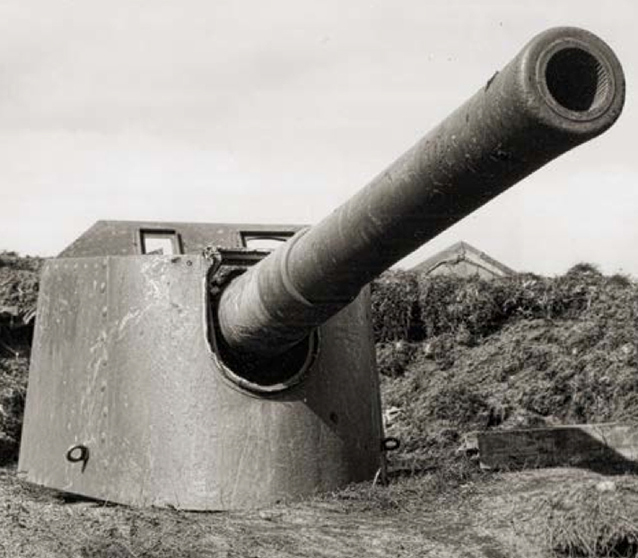
NARA, Record Group 80-G-80384
Alaska Digital Archives - http://vilda.alaska.edu/index.php
This site presents a wealth of historical photographs, albums, oral histories, moving images, maps, documents, physical objects, and other materials from libraries, museums and archives throughout Alaska. This site has a large variety of digitized photos, interviews, documents, and films from World War II.
Alaska Library Web Pages - http://www.publiclibraries.com/alaska.htm
This site offers a list of links to library web pages throughout the state and to SLED, which provides access to library catalogs and related resources. Alaska Library Web Pages is maintained by the Alaska Library Association.
Alaska Library Directory - http://library.alaska.gov/forms/libraryDirectory.aspx
This site provides a list of basic user information for every library in Alaska. The site is maintained by the Alaska State Library.
Museums and Historical Societies in Alaska - http://museums.alaska.gov/list.html
Here you will find a complete list of Alaska’s museums and historical societies, each with user information and a description of facilities. The site is maintained by Alaska State Museums.
Statewide Library Electronic Doorway (SLED) - http://sled.alaska.edu/
SLED offers access to library catalogs and other resources of interest to Alaskans under the slogan “information resources for, about and by Alaskans.”
Internet Sites
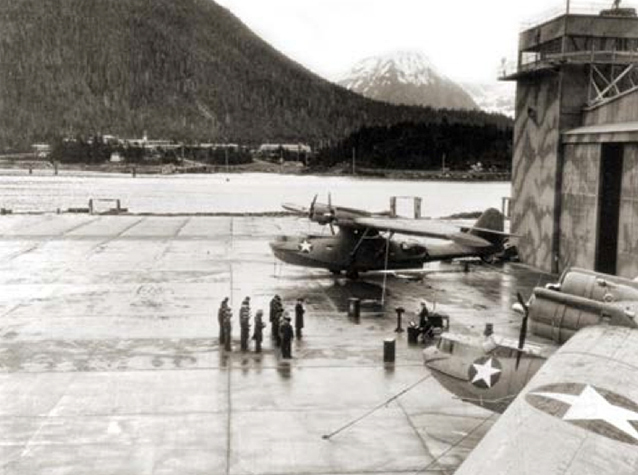
Sitka Historical Society and Museum
The following sites contain information about WWII in Alaska. An Internet search under “World War II” will yield many others which examine the war as a global phenomenon or focus on specific events during the war years.
Aleutians Campaign, June 1942-August 1943: United States Navy Combat Narrative
http://www.history.navy.mil/library/online/aleutians_campaign.htm
During WWII the U.S. Naval Historical Center began producing combat narratives of specific naval campaigns. This once- restricted document is offered by the NHC not as an official history but as a view through the eyes of the Navy in 1943.
The Aleutians Home Page
http://www.hlswilliwaw.com/aleutians/
This website began as a site to promote the sharing of anecdotes, photos, and links related to the post-World War II Shemya. Its content quickly grew to include experiences of World War II veterans of Shemya and other Aleutian Islands.
Aleutian Islands: The U.S. Army Campaigns of World War II
http://www.history.army.mil/brochures/aleut/aleut.htm
This site contains a detailed U.S. Army article on the Aleutian Campaign. Included also are maps, illustrations, and a list of suggested reading.
Aleutian World War II National Historic Area
https://www.nps.gov/aleu/index.htm
This is the National Park Service website for the Aleutian World War II National Historic Area. It provides information on the Aleutian Campaign, Aleut Evacuation, interviews with veterans, and other information of interest to the general public, teachers, and students.
Forgotten Decades, WWII Alaskans Finally Get Their Due
http://www.npr.org/2013/05/28/186485619/forgotten-for-decades-wwii-alaskans-finally-get-their-due
This is a National Public Radio segment on Marvin “Muktuk” Marston and the more than 6,300 Alaska Natives that volunteered for the Alaska Territorial Guard during World War II.
Kodiak Alaska Military History Museum
http://www.kadiak.org
This site includes a variety of documents relating to WWII in Kodiak, with both historic and more current day images. The Museum is housed in an historic Ammunition bunker at Miller Point, the former Fort Abercrombie, which today is a State Park in Kodiak.
LitSite Alaska
http://www.litsite.org
LitSite Alaska, showcases a living archive of lesson plans used in Alaskan classrooms and an extensive collection of excellent peer work by Alaskan students. It is a production of the University of Alaska Anchorage and has a number of sources discussing World War II in Alaska.
National Museum of the Air Force
http://www.nationalmuseum.af.mil/
This site is maintained by the National Museum of the Air Force on Wright-Patterson AFB, Dayton, Ohio. It offers a series of short narratives concerning all aspects of the War in the Pacific, including the Aleutian Campaign.
Photos from the Aleutian Campaign
http://eubank-web.com/Donald/Aleutian/index.html
This site includes an impressive collection of WWII photographs taken in Adak and other Aleutian sites. The photos belonged to Dr. Will R. Eubank, an aviation medical examiner in the Army Air Corps. Together they help to tell the story of Eubank’s twelve month tour during the Aleutian Campaign.
Sitka’s WWII Site
http://www.sitkaww2.com/
This site, designed by a student named Mathew Hunter, is an excellent source for researching Sitka Naval Operating Base and Sitka’s military history. In addition to an historical narrative the site offers historic photographs, maps, and present-day snapshots of Sitka’s military installations.
Sources and Citation

NPS Sam Maloof WWII in Alaska Photograph Collection courtesy of Beverly Maloof.
While this guide is intended primarily to assist teachers and students in finding information about the World War II in Alaska it also important to be able to identify types of sources and how to properly cite them in a bibliography or note. Below is some general guidance and some links to more specific guidance to help you in you research.
Types of Sources:
Primary Sources
A primary source is a piece of information about a historical event or period in which the creator of the source was an actual participant in or a contemporary of a historical moment. Examples include historic photos, diaries, government documents, artifacts, and other written and tangible items created during the historical period you are studying.
Secondary Sources
A secondary source is a source that was not created first-hand by someone who participated in the historical era. Examples of secondary sources inlude journal articles and books written about historic events by historians, using primary and secondary sources. A secondary source is a person’s interpretation of what a primary source means.
Tertiary Sources
Tertiary sources are based on a collection of primary and secondary sources and may or may not be written by an expert. Tertiary sources are only used as exploratory sources and should never appear in your bibliography. These include dictionaries, encyclopedias, fact books, and guide books and are intended to give you ideas about what to research. Wikipedia is popular tertiary source that should not appear in your bibliography.
Citing Sources:
A key part of any research project is citing your sources. For historians there are generally three accepted styles of citation: Turabian, MLA, and Chicago Style. If you are doing a National History Day project Turabian or MLA must be used to cite your sources, however it is recommended that you ask your teacher before deciding which style to use. Below are the citations for each of the respective guides written in their bibliographic formats. Note the subtle differences in each.
MLA. MLA Handbook for Writers of Research Papers, 7th Edition. New York: Modern Language Association of America, 2009. Print.
Turabian, Kate L. 2013. A Manual for Writers of Research Papers, Theses, and Dissertations, Eighth Edition: Chicago Style for Students and Researchers. Chicago: University of Chicago Press.
University of Chicago Press. The Chicago Manual of Style, 16th Edition. Chicago: University Chicago Press, 2010.
National History Day
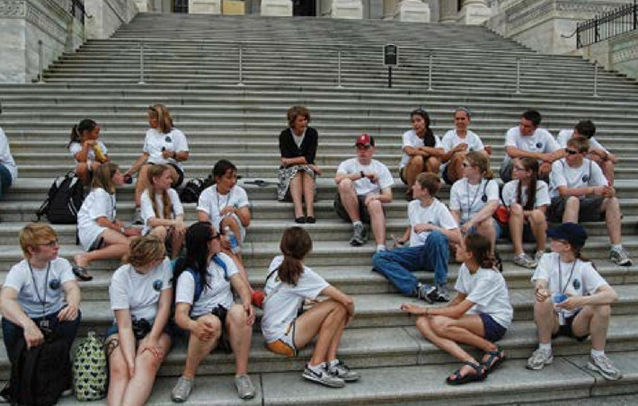
National Park Service
One opportunity to research an Alaska World War II history topic is through the National History Day (NHD) program. NHD is an innovative curriculum framework in which students in grades 6-12 learn history by selecting topics of interest and launching into a year-long research project. The purpose of National History Day is to improve the teaching and learning of history in middle and high schools.
Following the school year, students
- select a topic related to an annual History Day theme
- select an entry category: website; documentary; exhibit; research paper; or performance
- follow guidance for conducting historical research and create an original project
These projects are entered into competitions in the spring at local, state and national levels where they are evaluated by professional historians and educators. The program culminates with the national competition held each June at the University of Maryland at College Park.
The National Park Service is a partner of National History Day. In Alaska, the National Park Service, Alaska Regional Office partners with the Alaska Association for Historic Preservation to bring the History Day program to schools across the state . Teachers may contact the state coordinator to request History Day curriculum guides or ask questions about the program by visiting the History Day in Alaska website at http://www.alaskahistoryday.com
Tags
- aleutian islands world war ii national historic area
- denali national park & preserve
- kenai fjords national park
- alaska
- world war ii
- military
- aleutian campaign
- alaska history
- world war ii alaska
- wwii
- relocation camps
- internment
- national historic landmark
- lend-lease program
- valor in the pacific
- history day
- akwomen
- history
- conflict
- war
Last updated: July 30, 2020
